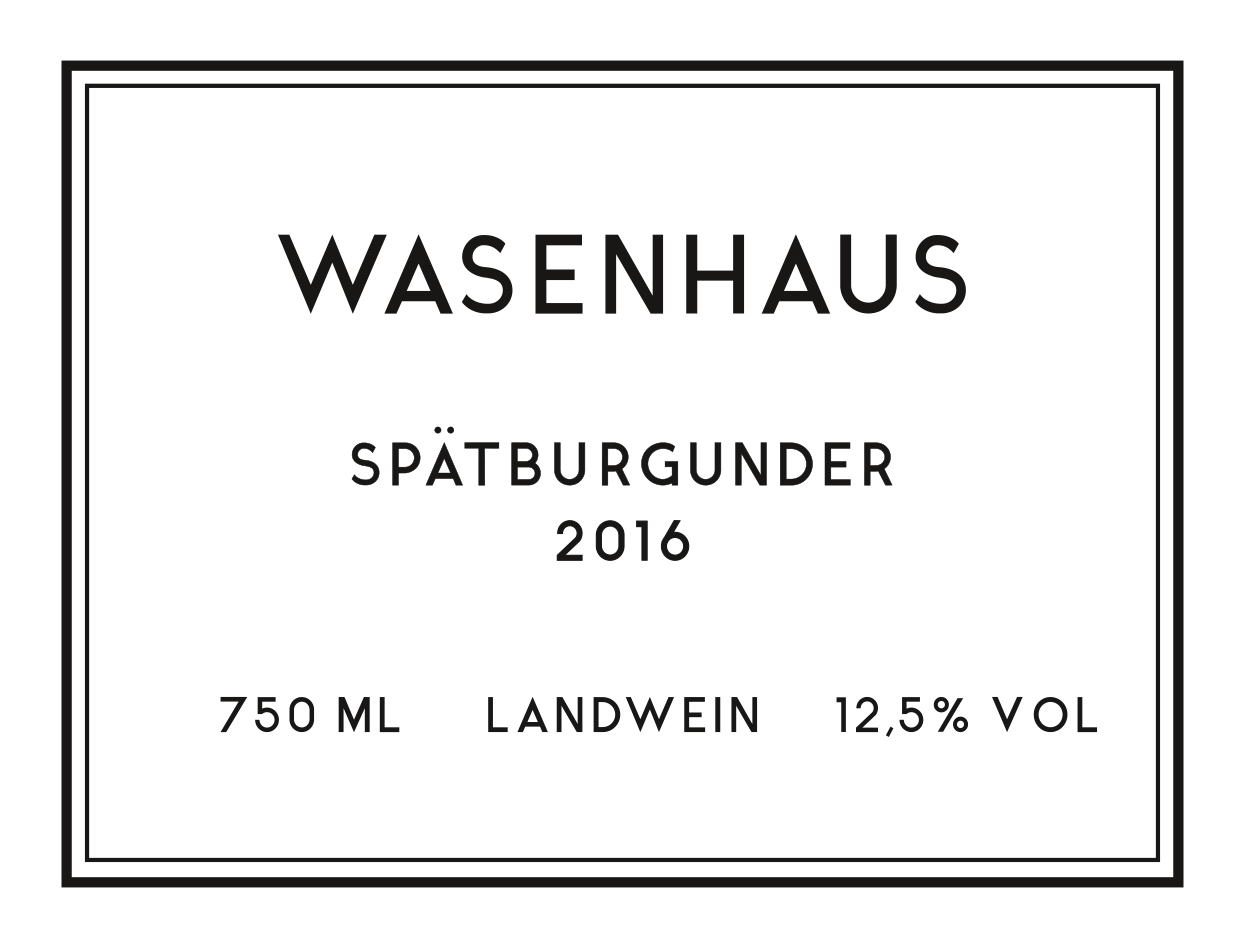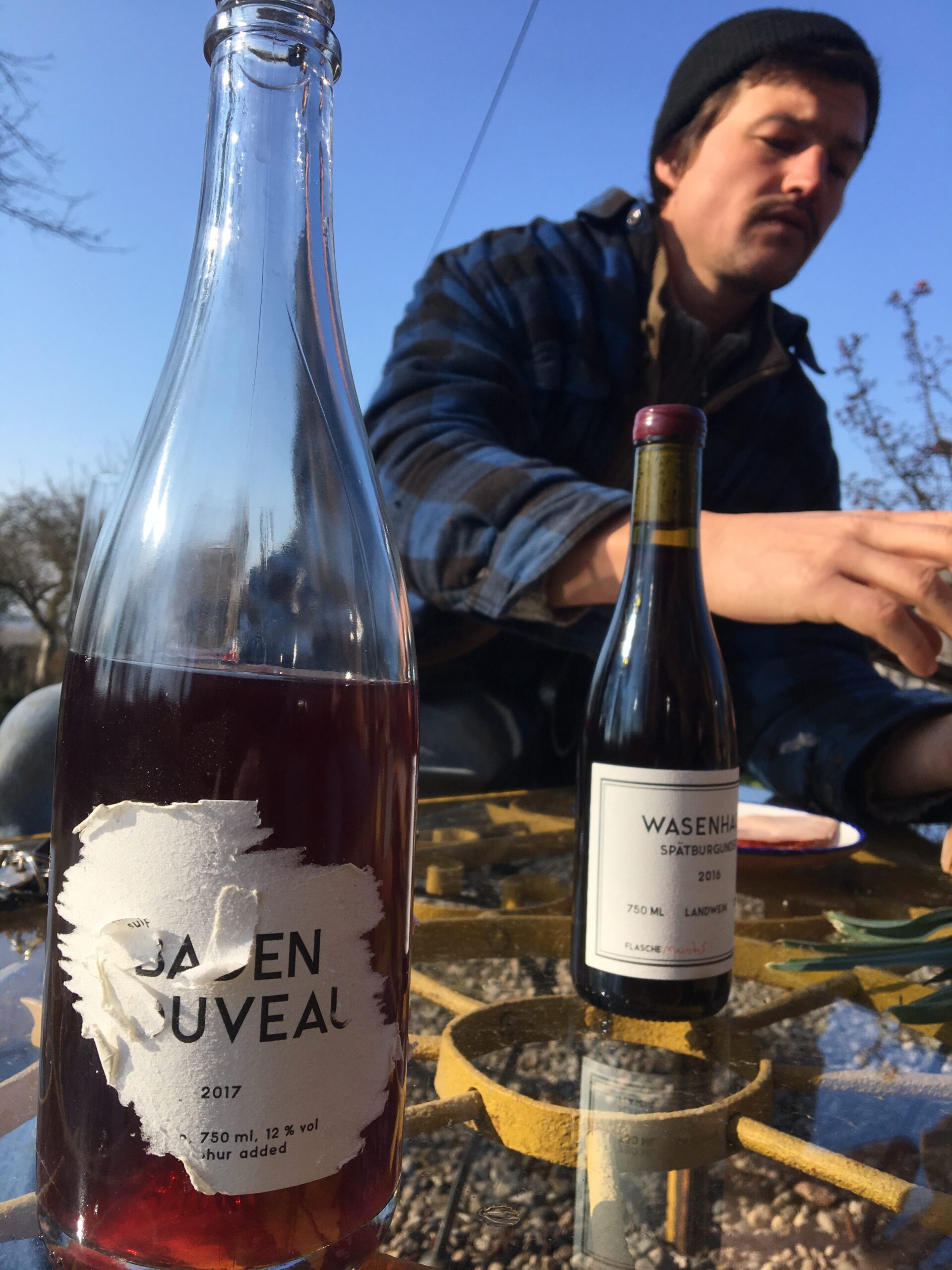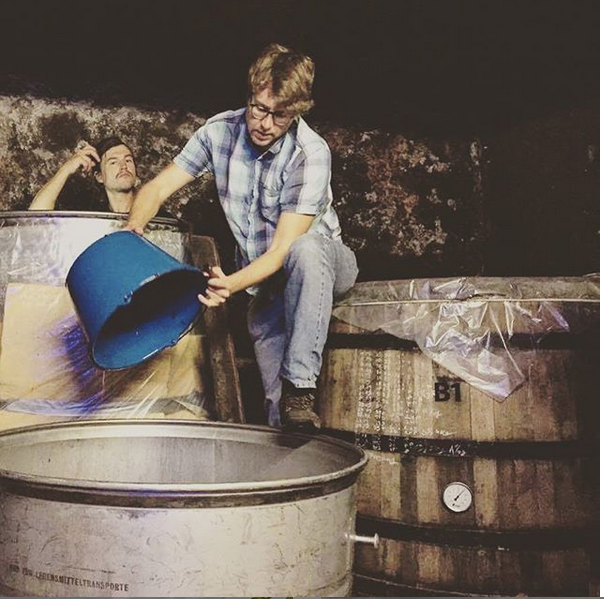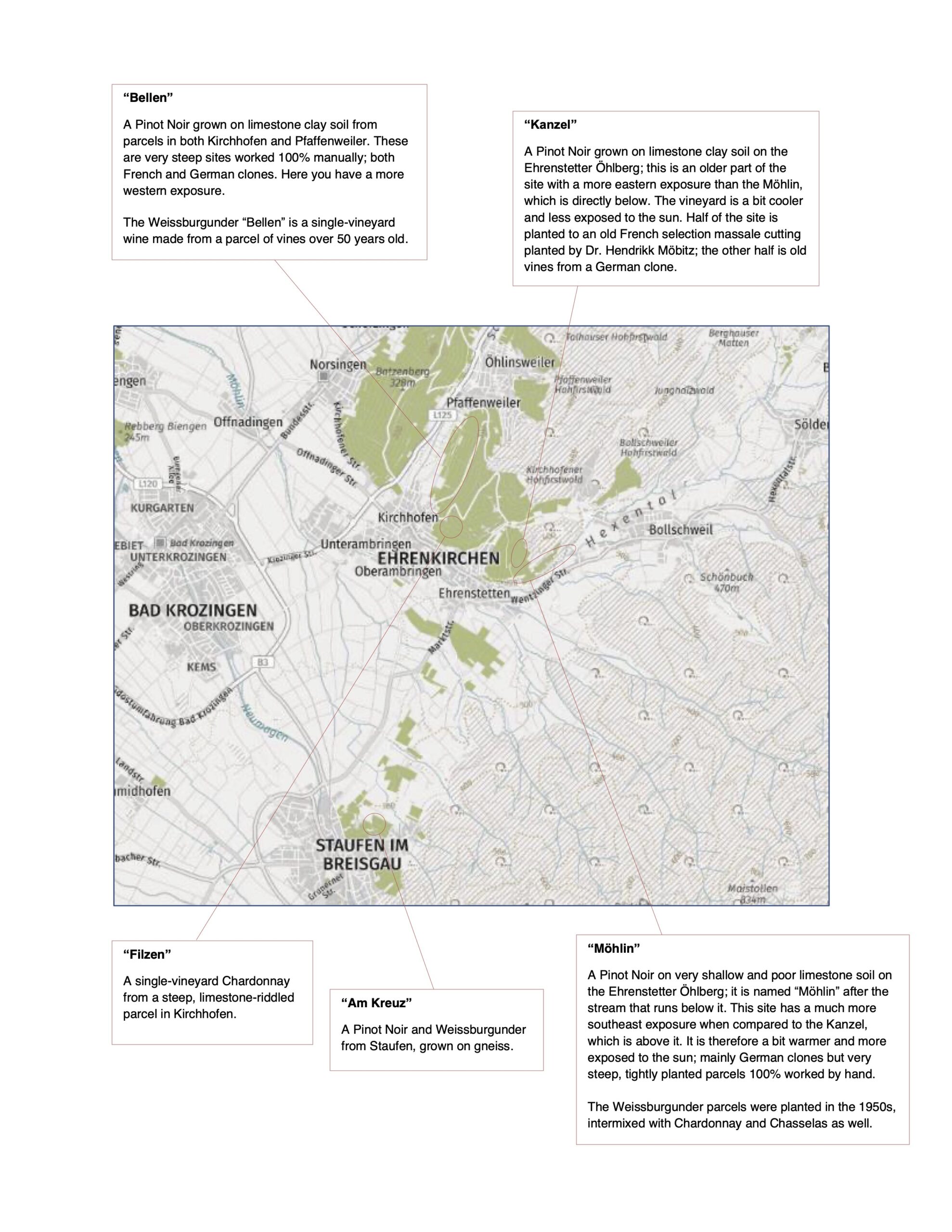I’ve had two mind-blowing “wow” moments with German Pinot Noir. Once with Enderle & Moll, tasting their first release in 2008. And now, with Wasenhaus, tasting their first releases in 2018.
One revelation every decade, I guess.
Alex Götze and Christoph Wolber, two Germans, were bitten by the same Burgundy-bug and ended up meeting each other in Beaune, both on their own wine-pilgrimage. Alex was born and raised in the area of Dresden and came to wine through architecture. Christoph was raised in Baden and a bottle of Bernard van Berg was so compelling that he ended up just jumping on his motorcycle and heading west.
Over a period of nearly a decade, both garnered pretty serious Burgundian credentials, working at Comte Armand, Bernard van Berg, Leflaive, de Montille, Pierre Morey and Domaine de la Vougeraie. Alex, in fact, was the vineyard manager for de Montille until 2021.
How could he have worked for de Montille and be involved in winemaking in Baden? The holy land of Pinot Noir is only about two-and-a-half hours due south west from Baden y’all, just FYI. (Below, Christoph Wolber in the vineyards.)
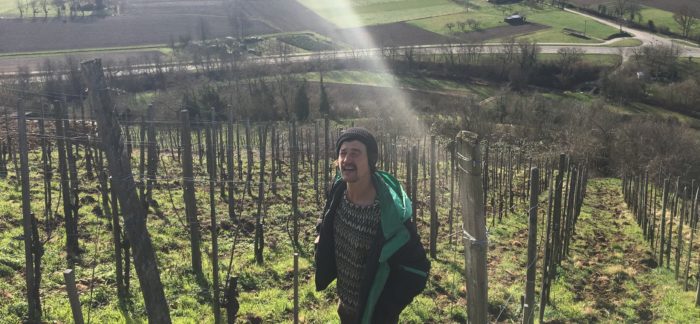
Now, I do not want this to be yet another vague and salesy essay about how Baden can make Burgundian wines; at the same time, the similarity in geography and, in some cases, soil type should also not be ignored. In any event, in this case, the geographical proximity allowed Wasenhaus to exist, at least at the beginning.
As for the wines, the measured introduction would be something like: these are among the most talked-about wines in Germany and they deserve this status. Honestly, I’ve had few people taste these wines and not have an eyebrow raise or a jaw drop. They are not only that good, but they are that obviously good.
Similar to Enderle & Moll, the Wasenhaus Pinot Noirs show an uncommon lightness and clarity; a finesse that embarrasses just about all other German Pinot Noirs. While Enderle & Moll tends to present more structured, a bit more tense and wild, the Wasenhaus wines are ultra-fine, with a textural elegance that is second to none. If Enderle & Moll is punk rock; Wasenhaus is chamber music – one isn’t better than the other, but they are very different.
While the Pinot Noirs are showstoppers, the Weissburgunders, for me at least, are revelatory.
The focus at Wasenhaus (thus named after the farm that Christoph grew up at, focusing on horses and not wine) is old vines, old clones, and in general curious parcels that dot the landscape of southern Baden (check out the map, to the right). Alex and Christoph seek out vineyards that have been ignored because they are too hard to work, because the yields are too low, for whatever quirky reason.
The farming is organic with elements of biodynamics woven in. They own very small plots near Staufen (this is where the farm “Wasenhaus” is located) and buy grapes from specific farmers and specific plots in the Kaiserstühl (again, the vineyar schematic will be useful here). The winemaking is low intervention. The white wines are all whole-cluster pressed with a basket press; the élevage is in neutral barrels of varying sizes. The reds are fermented in open-top vats and then aged in neutral barrels as well. Only natural yeasts are used, and all wines are bottled unfined and unfiltered. Sulfur is used only at bottling and minimally.
Please keep in mind that Alex and Christoph are farming only around four hectares. I think we got the majority of their production in the beginning, and now get a good wallop of it, but this amounts to not a whole lotta wine. So while these wines are worth the trouble to find, keep in mind finding them will be some trouble. Our apologies there. Small growers, big problems ya know?
If you’d like to be put on the mailing list to be alerted to when we receive any Wasenhaus wines, please email us at info at vomboden dot com.
